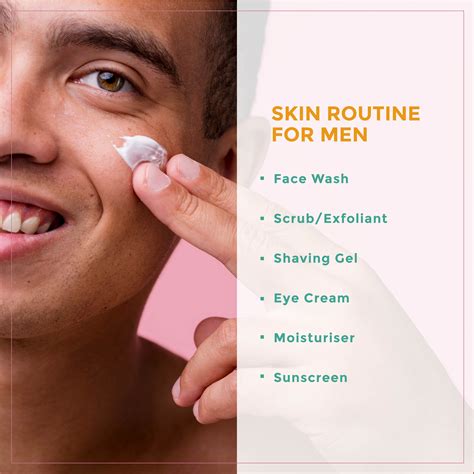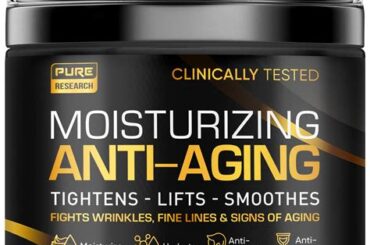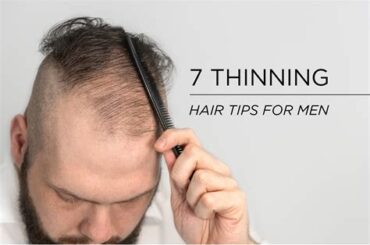Are you tired of dealing with dull, dry, or irritated skin? Taking care of your skin is not just for women – men also need to establish a routine to keep their skin healthy and clear. In this blog post, we will discuss the essential steps for a men’s skin care routine that will help you achieve the smooth and radiant skin you desire. From cleansing and exfoliation to toning and moisturizing, we will cover each step in detail and explain its importance in maintaining healthy skin. Additionally, we will explore the benefits of sunscreen application, serum and eye cream usage, and the importance of a nighttime routine for skin repair and rejuvenation. So, if you’re ready to take control of your skin’s health, keep reading to learn how to establish an effective skin care routine tailored for men.
Cleansing: Removing dirt and impurities
Proper cleansing is an essential step in any skincare routine. It removes dirt, oil, and impurities that can clog pores and lead to breakouts. It also helps in preparing the skin to effectively absorb the products that follow.
When cleansing the skin, it’s important to choose a gentle cleanser that won’t strip the skin of its natural oils. Using harsh products can disrupt the skin’s moisture balance and cause irritation.
It’s recommended to cleanse the skin twice a day, in the morning and before bedtime. This ensures that the skin stays clean and free of impurities, allowing it to breathe and function optimally.
Overall, cleansing is a crucial step in maintaining healthy and clear skin. It sets the foundation for the rest of the skincare routine, allowing other products to work more effectively and keeping the skin looking its best.
Exfoliation: Removing dead skin cells
Exfoliation is a crucial step in any skincare routine, as it helps in removing dead skin cells from the surface of the skin, revealing a smoother and brighter complexion underneath. Regular exfoliation can unclog pores, prevent acne, and improve the overall texture of the skin.
There are two main types of exfoliation: physical and chemical. Physical exfoliation involves using a scrub or a tool to manually slough off dead skin cells, while chemical exfoliation utilizes acids like AHAs and BHAs to dissolve the bonds between skin cells.
When exfoliating, it’s important to use gentle, circular motions to avoid causing damage to the skin. Over-exfoliation can lead to irritation, sensitivity, and even breakouts, so it’s crucial to find the right balance and frequency for your skin type.
After exfoliating, it’s essential to follow up with moisturizer and sunscreen to protect and nourish the newly revealed skin. With consistent exfoliation, you can achieve a more radiant and youthful complexion.
Toning: Balancing the skin’s pH levels
When it comes to skincare, toning is often seen as an optional step, but it can actually make a significant difference in the health and appearance of your skin. One of the key benefits of toning is its ability to balance the skin’s pH levels. Our skin has a natural pH level of around 5.5, which is slightly acidic. However, factors such as cleansing, environmental stressors, and the use of alkaline skincare products can disrupt this balance, leading to issues like dryness, irritation, and breakouts.
Using a toner can help to restore the skin’s pH levels, creating an environment that is more conducive to overall skin health. By bringing the skin back to its natural pH, toning can help to minimize the risk of irritation and inflammation, while also promoting a more radiant and balanced complexion.
It’s important to choose a toner that is specifically formulated to balance the skin’s pH levels, as some products may contain harsh ingredients that can do more harm than good. Look for toners that are alcohol-free and enriched with soothing and hydrating ingredients like hyaluronic acid and witch hazel.
Incorporating a toner into your daily skincare routine can help to support the overall health and balance of your skin, making it an essential step in achieving a clear, radiant, and healthy complexion.
Moisturizing: Hydrating and nourishing the skin
Moisturizing is a crucial step in any skincare routine, as it helps to keep the skin hydrated and nourished. Using a moisturizer regularly can prevent dryness, flakiness, and dullness, leaving the skin looking and feeling healthy and radiant.
When choosing a moisturizer, it’s important to consider your skin type. For oily skin, a lightweight, oil-free moisturizer is ideal, while those with dry skin may benefit from a thicker, creamier formula. Additionally, individuals with sensitive skin should opt for a gentle, fragrance-free moisturizer to avoid irritation.
Applying moisturizer to the skin is best done after cleansing and toning, as this allows the product to be absorbed more effectively. It’s also important to use a separate moisturizer specifically formulated for the face, as body lotions may be too heavy and can potentially clog pores.
Aside from hydrating the skin, using a moisturizer can also help to protect the skin’s moisture barrier and maintain its overall health. Regular use of a moisturizer can also aid in the prevention of fine lines and wrinkles, making it an essential part of any skincare routine.
Sunscreen application: Protecting against harmful UV rays
Applying sunscreen is a crucial step in any skincare routine, as it helps protect the skin from the harmful effects of UV rays. When exposed to the sun, the skin can suffer from sunburn, premature aging, and an increased risk of skin cancer. That’s why incorporating sunscreen application into your daily skincare regimen is essential for maintaining healthy, radiant skin.
It’s important to use a broad-spectrum sunscreen, which means it protects against both UVA and UVB rays. UVA rays can penetrate deeper into the skin and cause premature aging, while UVB rays are responsible for sunburn. By using a broad-spectrum sunscreen, you can shield your skin from both types of damaging rays.
When applying sunscreen, make sure to use a sufficient amount to cover all exposed areas of the skin. This includes the face, neck, ears, and any other areas that will be exposed to the sun. Additionally, it’s crucial to reapply sunscreen every two hours, or more frequently if swimming or sweating.
By consistently applying sunscreen as part of your skincare routine, you can help protect your skin from sun damage and maintain a healthy, youthful complexion for years to come.
Serum application: Targeting specific skin concerns
When it comes to taking care of your skin, applying a serum can be a game-changer. Serums are lightweight, fast-absorbing liquids that are packed with concentrated active ingredients designed to target specific skin concerns. Whether you’re dealing with uneven skin tone, fine lines, or dryness, there’s a serum out there for you.
One of the key benefits of using a serum is its ability to penetrate deep into the skin, delivering a high concentration of potent ingredients directly to where they’re needed most. This makes them a powerful tool in your skincare routine, allowing you to address issues at a deeper level than other products may be able to reach.
When it comes to choosing a serum, it’s important to consider your specific skin concerns and look for ingredients that are tailored to address them. For example, if you’re looking to brighten your complexion, you might opt for a serum containing vitamin C, while those dealing with fine lines and wrinkles might turn to retinol. There are also serums designed to hydrate, soothe, and protect the skin, so be sure to do your research and find the right one for you.
Overall, adding a serum to your skincare routine can help you target and address specific skin concerns more effectively than relying on just a moisturizer alone. With the right serum, you can give your skin the extra boost it needs to look and feel its best.
Eye cream: Reducing dark circles and puffiness
One of the most common skincare concerns is the presence of dark circles and puffiness around the eyes. These issues can give a tired and aged appearance, and many people are on the lookout for effective solutions to reduce their visibility.
Using an eye cream specifically formulated to target dark circles and puffiness can be a game changer in your skincare routine. Look for products containing ingredients such as Vitamin C, caffeine, and hyaluronic acid, which are known for their brightening and de-puffing properties.
When applying the eye cream, be gentle and use your ring finger to dab a small amount onto the skin around your eyes. Avoid dragging or pulling on the delicate skin in this area to prevent further irritation. Consistent use of the eye cream both morning and night can lead to visible improvements in the reduction of dark circles and puffiness over time.
In addition to using an eye cream, incorporating other healthy habits such as getting enough sleep, staying hydrated, and using cold compresses can further enhance the results in reducing dark circles and puffiness, leaving you with a more refreshed and youthful appearance.
Face mask: Enhancing skin quality and radiance
Face masks are a great way to enhance the quality and radiance of your skin. Whether you have oily, dry, or combination skin, there is a face mask out there for you. These masks are designed to deeply cleanse the skin, unclog pores, and provide intense hydration. By incorporating a face mask into your skincare routine on a regular basis, you can see a noticeable improvement in the overall appearance of your skin.
When it comes to choosing a face mask, it’s important to consider your skin type and specific concerns. For those with oily or acne-prone skin, a clay mask can help to absorb excess oil and purify the pores. On the other hand, those with dry or sensitive skin may benefit from a hydrating or soothing mask to replenish moisture and calm irritation.
Applying a face mask is a luxurious and relaxing experience, and it gives you an opportunity to pamper yourself while taking care of your skin. To get the most out of your mask, make sure to cleanse your face thoroughly beforehand to remove any dirt and makeup. Then, apply the mask evenly to your skin, avoiding the delicate eye area, and leave it on for the recommended amount of time. Once the mask has worked its magic, gently rinse it off with lukewarm water and follow up with your regular skincare routine.
In addition to improving the overall quality and radiance of the skin, using a face mask can also help to target specific concerns such as dullness, uneven texture, or lack of firmness. With regular use, you can achieve a smoother, brighter, and more youthful complexion, making the face mask an essential step in any skincare regimen.
Shaving prep: Preparing the skin for a smooth shave
Shaving prep is an essential step in achieving a smooth and comfortable shave. Prepping the skin before shaving helps to soften the hair and open up the pores, making it easier to get a close shave without irritation or razor burn. One of the most important aspects of shaving prep is cleansing the skin. Before starting the shaving process, it’s important to wash your face with a gentle cleanser to remove any dirt, oil, and impurities that may be present on the skin’s surface. This helps to create a clean canvas for the razor to glide smoothly over, reducing the chances of ingrown hairs or nicks.
Another crucial step in shaving prep is exfoliation. Exfoliating the skin helps to remove dead skin cells, allowing for a closer shave. It also helps to prevent ingrown hairs and bumps by lifting the hair away from the skin. Additionally, exfoliation can help to prevent clogged pores, which can lead to acne or razor bumps. Using a gentle exfoliating scrub or a soft-bristled brush can help to achieve the desired smoothness for a clean shave.
Toning the skin is also an important part of shaving prep. Toning helps to balance the skin’s pH levels, which can be disrupted during the shaving process. It also helps to tighten the pores and prepare the skin for the next steps in the shaving routine. Using a gentle, alcohol-free toner can help to soothe and refresh the skin, creating a smooth surface for the razor to work on.
After cleansing, exfoliating, and toning, the final step in shaving prep is moisturizing. Hydrating and nourishing the skin with a moisturizer helps to create a protective barrier between the razor and the skin, reducing the chances of irritation and redness. It also helps to soften the hair and prepare the skin for a smooth and comfortable shave. Using a moisturizer with soothing ingredients such as aloe vera or chamomile can further enhance the shaving experience.
Nighttime routine: Repairing and rejuvenating the skin while sleeping
When it comes to taking care of your skin, it’s not just about what you do during the day – your nighttime routine is just as important. Repairing and rejuvenating your skin while you sleep can have a significant impact on its overall health and appearance.
One of the most crucial steps in a nighttime routine is to thoroughly cleanse your skin. Throughout the day, your skin is exposed to dirt, oil, and pollutants, which can all contribute to clogged pores and breakouts. Using a gentle cleanser before bed can help to remove these impurities, allowing your skin to breathe and regenerate as you sleep.
In addition to cleansing, moisturizing is essential for repairing and rejuvenating the skin. Applying a nourishing night cream or serum can help to replenish lost moisture, promote cell turnover, and reduce the appearance of fine lines and wrinkles. These products often contain ingredients that work more effectively overnight, making them a valuable addition to your nighttime routine.
Finally, don’t forget to focus on targeting specific skin concerns during your nighttime routine. Whether you’re dealing with dark spots, acne, or uneven texture, incorporating a treatment product into your routine can help to address these issues while you sleep. Look for products containing retinol, hyaluronic acid, or vitamin C to target specific concerns and promote a healthy, glowing complexion.





